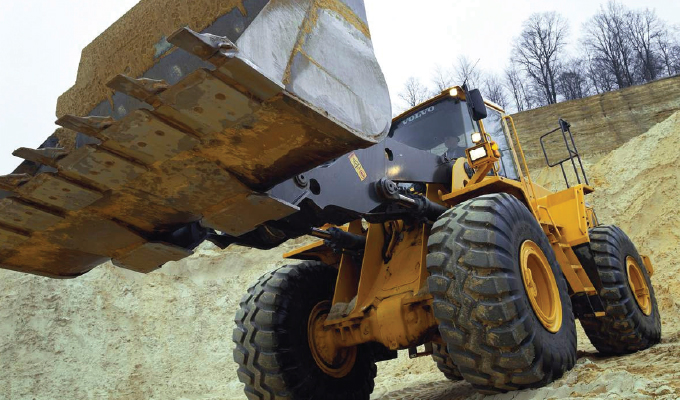Regular inspections will help enhance tire longevity and performance
Like inflation level checks, tread depth inspections, and other tire maintenance practices, regular site audits should be an important component of your tire maintenance program.
The relatively little time and effort required to conduct regular site audits can yield big dividends in terms of helping to enhance tire longevity and performance. Focus on these areas when inspecting your jobsite:
ROAD MAINTENANCE
Conduct frequent visual sweeps of all roads coming into or out of the jobsite. Make sure they are free of tire-damaging construction debris, like rebar, sharp metal materials, rocks, and other items. Be aware of your equipment’s surroundings and make sure potentially harmful items are reported to management and removed.
STANDING WATER
Correct water management is essential to tire maintenance. Why? First, water acts as a lubricant, making a tire much more susceptible to not only puncture impacts but also cutting in the tread area. These cuts can evolve into bigger, more problematic fissures over time, and can lead to early removal of the tire.
When identified, tread cuts should be examined as soon as possible. With the right attention, depending on the cut’s severity, some tires have the potential to be repaired and returned to service after the issue has been properly addressed. We strongly recommend consulting with an authorized Goodyear construction tire dealer if you have concerns about tread cuts or any other condition pertaining to your tires. These experts will have the experience to help you make the right decisions about your valuable tire assets.
Second, water hides potentially damaging debris. And keep an eye out for excessively muddy surfaces that also can disguise objects. We sometimes advise filling in muddy areas with gravel to create a hard-packed, robust surface that minimizes exposure to harmful items lurking in the mud. This also helps increase vehicle traction, which cuts down on tire spin, a dynamic that can be detrimental to tire longevity.
SURFACE GRADES/OVERLOADING
Goodyear recommends that you limit road and/or surface grades to under 8 percent. However, we also realize that, depending on the nature of the job and the surrounding environment, this is not always possible. If that is the case, tire overload can become an issue. Think of a haul truck that must travel up and down a steep incline many times a day. If the truck is downhill-loaded, weight-transfer to the front axle will put more pressure on the front tires. If the same truck then climbs upwards, weight can transfer to the rear axle, placing more strain on the back tires. Neither situation is ideal. When a condition like this is present, reducing the size and volume of your loads should be considered. This will help minimize the opportunity for tire overloading. Chronic overloading could reduce tire life expectancy because excessive deflection may generate excessive heat buildup or make tires more vulnerable to sidewall impacts.
CONCLUSION
Finally, keep a record of what you find during site audits. Just like maintaining a database of tire maintenance information like tread depth and inflation checks can help you manage your tire assets more effectively, keeping a historical record of site audits will help you track how far you’ve come and areas where you can continue to improve. These practices will help you drive even more cost out of your operation.
About the author:
OTR tire veteran Eric Matson is the global field engineering manager for The Goodyear Tire & Rubber Company’s OTR tire business. For more information, visit www.goodyearotr.com.
Modern Contractor Solutions, March 2019
Did you enjoy this article?
Subscribe to the FREE Digital Edition of Modern Contractor Solutions magazine.



